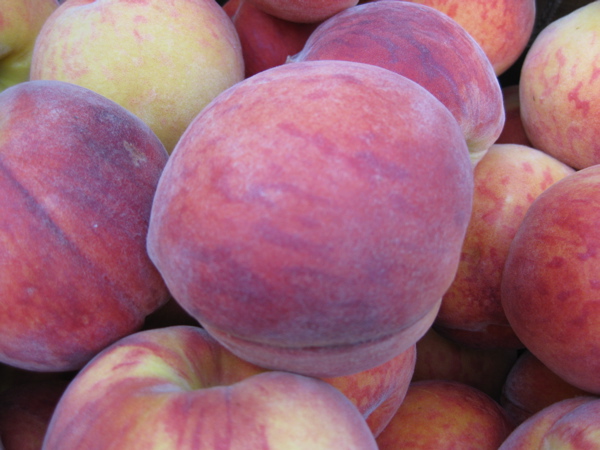Consider these a short list of links to quality information on Good Agricultural Practices that might be of particular interest to tree fruit growers. If you have any questions, don't hesitate to get in touch with a member of the UMass Fruit Program. |
 |
US FDA/CFSAN (Final) Guidance fo Industry: Guide to Minimize Food Safety
Hazards for Fresh Fruits and Vegetables
This document has been prepared as guidance by the Food and Drug Administration (FDA) and the USDA. This guidance represents the current thinking of FDA and USDA on a number of microbial food safety hazards and on good agricultural and management practices common to the growing, packing, and transport of most fresh fruits and vegetables. It does not create or confer any rights for or on any person and does not operate to bind FDA or USDA or the public. The agencies encourage growers, packers, and shippers to use the general recommendations in this guidance to tailor food safety practices appropriate to their particular operations. An alternative approach may be used if such approach would effectively serve to reduce microbial hazards that could result in foodborne illness and if such approach satisfies applicable statutes and regulations. More...
USDA Good Agricultural Practices & Good Handling Practices Audit Verification
Checklist
This program is intended to assess a participant’s efforts to minimize the risk of contamination of fresh fruits, vegetables, nuts and miscellaneous commodities by microbial pathogens based on the U.S. Food and Drug Administration’s “Guide to Minimize Microbial Food Safety Hazards for Fresh Fruits and Vegetables.” (This is the checklist used by USDA inspectors when doing a farm audit.) More...
Grading, Certification and Verification (USDA Agricultural Marketing
Service)
With the increasing focus on good agricultural practices to verify that farms are producing fruits and vegetables in the safest manner possible, third party audits are being utilized by the retail and food service industry to verify their suppliers are in conformance to specific agricultural best practices. Since 1999, the Agricultural Marketing Service has been actively involved with the produce industry offering auditing services throughout the food chain to verify that best practices are being followed. More...
National GAPs Program: Good Agricultural Practices Network for Education
and Training (GAPsNET)
The National GAPs Program was established in 1999, funded by CSREES-USDA and US-FDA, and based at Cornell University. The GAPs Program has collaborators in 26 states throughout the nation and has created many educational materials to help implement good agricultural practices on the farm. More...
National GAPs Educational Materials
From GAPsNET. In English, Espanol, Hmong, Lao, and Ilocano. More...
Food Safety Begins on the Farm: A Grower's Guide
This 28-page color booklet provides an overview of good agricultural practices that can be implemented on farms and in packinghouses as well as background information on food-borne illnesses related to produce consumption. In English and Spanish. More...
New England Extension Food Safety Consortium -- Good Agricultural Practices
Welcome to the Good Agricultural Practices (GAP) section of the University of Connecticut Integrated Pest Management Web Site. The College of Agriculture and Natural Resources Cooperative Extension Food Safety Program is participating in a New England regional GAP project. We plan to bring information to produce farmers so that they have the skills needed to reduce the risk that their fresh produce will be contaminated with microorganisms that can make people sick. More...
On-Farm Food Safety from Penn State University
Four steps to safer farm practices: 1) Learn about on-farm food safety; 2) Compare your farm practices with nationwide food safety standards; 3) Write a farm food safety plan; 4) Find a third party auditor. More...
On-farm Food Safety: Guide to Good Agricultural Practices (GAPs) from
Iowa State University
Good Agricultural Practices, more commonly referred to as GAPs, are a set of recommendations that can help improve the quality and safety of the produce grown. These general guidelines can be adapted and/or incorporated into any production system. GAPs focus on four primary components of production and processing: soil, water, hands, and surfaces. More...
Univeristy of Wisconsin Farm*A*Syst: Linking Food Safety to Farm*A*Syst
and IPM to Reduce Microbial and Pesticide Risks in Apples
This multi-disciplinary project will develop practical tools to help apple growers in Vermont, Washington state and Wisconsin address related challenges in managing their operations to protect the quality of the food supply and the environment. Includes a three-part checklist covering microbial contamination, pesticide risks, and liability and risk management for apples. More...
©Copyright 2008 University of Massachusetts Amherst. Site policies. Produced and maintained by the UMass Fruit Program.